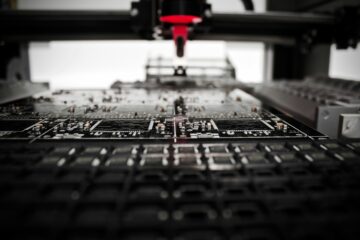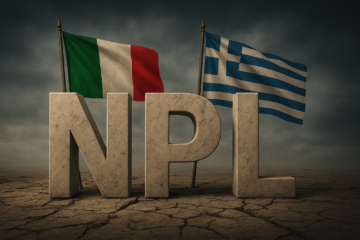Introduction
Chinese buyers are becoming increasingly important in worldwide M&A activities. Their deal volume has increased from $259bn in 2013 to $735bn in 2015, of which $61bn were closed cross-border transactions. In 2016 the numbers have considerably increased: announced cross-border activity reached $96bn in Q1 and the up-to-date expected volume for the year hits a record $159.2bn.
Key Drivers and Evolution Trends
In the last years, several factors have been contributing to the surge in Chinese outbound M&A activity.
First, despite retaining one of the highest growth rates globally, the Chinese economy is maturing and companies have thus turned to both domestic and outbound M&A to counterbalance the slowing in organic growth.
Outbound acquisitions have been favored both by the scarcity of attractive domestic targets and by a clear strategic rationale. The period of double-digit GDP growth that ended in 2010 was characterized by rapid industrial expansion and urbanization. To support this, Chinese M&A was mostly focused on energy and resources. In the last years, as the economy has matured, outbound priorities have evolved to focus on high tech, industrial know-how and consumption.
Secondly, Chinese companies are now more experienced in M&A and are more comfortable executing public takeovers and arranging acquisition financing. Furthermore, we also see a broader universe of Chinese buyers. Indeed, Chinese outbound M&A has historically been dominated by state-owned firms. As of today, state-owned enterprises still play a major role, but thanks to monetary easing measures and the strategic imperative to execute overseas acquisitions, other buyers have emerged as well, notably PE funds and private companies. Many analysts agree that being private companies nimbler and more flexible, they will drive the future of outbound M&A.
Deal making is also encouraged by the general positive consensus towards outbound acquisitions and thus a supportive and accommodating financial and political environment. From a financial point of view, the People’s Bank of China (PBOC) has taken a number of monetary easing measures, including the reduction of the reserve requirement ratio for domestic banks from 20% to 17% and the reduction of the benchmark interest rate from 6% to 4.35%, making it easier for domestic commercial banks to provide cheap financing to acquirers.
The government is also actively supporting strategic investments through several initiatives and policies, both domestically and internationally. One notable example is the “China’s One Belt One Road” venture, which has the objective of enhancing trade between Europe and Asia, and will bring with it a series of infrastructure investments.
Finally, shareholders and financial markets are also in favour of outbound M&A activity. Indeed, Chinese companies that make overseas acquisitions see their stock prices rise and in many cases the increase in market value is out of proportion compared to the value added.
Implications for Western Sellers
Western sellers are carefully weighting all the possible implications of entering a transaction with a Chinese buyer. Given that Chinese buyers usually express interest in long-term investment, and that when valuing target companies, they tend to use a lower discount rate (cheaper financing) thus offering higher premiums, these deals are often very attractive for the sellers. Moreover, being less familiar with Western markets’ culture and dynamics Chinese buyer have a strong incentive to retain the target’s management team.
At the same time, there are some relevant problems when dealing with Chinese buyers.
Firstly, timing could be an issue. Indeed, state-controlled Chinese companies may need up to six months to prepare an auction whereas Western companies usually require less time. However, private Chinese companies, which are becoming increasingly relevant in cross-border M&A, are more flexible. Thus, this issue will likely become less relevant in the future.
Secondly, the founding of Chinese outbound M&A activities can be more complex and less transparent than Western M&A financing. Moreover, it is not always easy for Chinese companies to succeed in their acquisitions due to strict governmental approval and requirements. Several foreign governments have proved reluctant to approve acquisitions in strategic industries such as natural resources and technology. Indeed, in Britain, the new prime minister – Theresa May – has recent delayed the final go-ahead for a massive new nuclear plant backed by China General Nuclear Power Group.
In order to face these issues, Chinese companies are now increasingly willing to use break-up fees in their M&A deals. Break-up fees allow them to ease some of the concerns of their foreign counterparts, helping them reach a final agreement.
Relevant Transactions
ChemChina acquisitions
ChemChina giant spending spree recently focused on Syngenta (see full deal here), a global Swiss agribusiness that produces agrochemicals and seeds. The $43bn takeover is an extremely strategic deal not only for ChemChina, but also for the Chinese Government. Indeed, the Swiss seed and pesticide supplier’s intellectual property and know-how will be critical for China, as it needs to modernize its agricultural industry so as to feed its growing population. After some regulatory issues, the transaction received clearance from the Committee on Foreign Investment in the United States in August 2016.
The deal with Syngenta represents the second big step towards a global consolidation of the Chinese company. Last year the company acquired the Italian tire maker Pirelli & Co. SpA for c. $7.3bn. The acquisition was expected to create long term industrial value in the tire sector, strengthen Pirelli’s development plans, reinforce the coverage of strategic geographical areas, and through integration, enable the company to double its sales volumes in the industrial tire business. The first step of ChemChina’s complex takeover of Pirelli took place in March 2015, when the Chinese group agreed to acquire Pirelli’s controlling shareholder Camfin.
Supercell acquisition
The Chinese interest in European companies is also pointed towards the high-tech industry. Within this industry, the $8.6bn deal between Tencent Holdings Ltd and Supercell Oy deserves a special mention. Tencent, China’s largest internet company, is leading a consortium that will buy 84% of the Finnish maker of “Clash of Clans”, reinforcing the company’s position as the world’s biggest videogame publisher by revenue and highlighting the company’s international ambitions. Indeed, Tencent’s $8.5bn revenue from gaming related activities in 2015 made it the world’s biggest game publisher, but its success has largely been domestic. Through this acquisition the Chinese giant will significantly increase its global market share in the gaming industry.
In 2015, Fosun International’s completed the acquisition of holiday group – Club Méditerrané, in the French market, with a tender offer that allowed the Chinese company to acquire 92.8% of the group for $939m.
In 2016, the shipping giant COSCO completed the acquisition of a majority stake in OLP, the company running the main Greek port of Piraeus. The deal, approved by the Greek parliament in July 2016, let COSCO acquire 67% of the port authority for €368.5m. The company is expected to invest about $552m in the Greek Port within the next five years, mainly in the cruise and shipbuilding industry while developing Piraeus’s facilities and services.
Finally, Chinese showed a strong interest in acquiring European firms in the semiconductor industry in order to gain market share and technology. Chinese Government in an act to spur this trend, set up a $20bn fund (called Sino IC Capital) which task is to specifically assist Chinese companies in acquiring foreign semiconductor technologies.
Oppositions and Discussions
Oppositions to the outbound Chinese M&A activity recently arose from many governments in the world as they fear Chinese influence in strategic domestic industries.
Among the most active opponents to the Chinese shopping spree in Europe is the German Government which saw several Chinese players trying to acquire German high tech firms and automotive suppliers in the last years. Specifically, German law allows for government intervention in cases where a commercial deal would jeopardize energy security or defense. Moreover, German government has the power to review any deal where non-EU investors acquire more than 25% of the voting rights of a German company. Recently, the 670m acquisition of Aixtron from Fujian Grand Chip Group was stopped by the German Government.
Notwithstanding the fierce opposition of several governments, it must be noticed that Chinese companies’ approach towards outbound M&A transactions is mostly friendly as they always try to accommodate local governments and regulators by committing to retain the existing management operating structure of the target firms. Headquarters are also typically kept in Europe as well as production facilities. Often, long term agreements to retain employees are also drafted.
Outlook
We expect this trend to continue in 2017 as Chinese investors are sitting on a lot of cash and the Chinese Government is facilitating acquisitions in Europe. Tech deals will likely remain strong, with ongoing consolidation in final months of 2016 and 2017. We also expect to see some large deals in the healthcare sector (supported by various policy initiatives – including the two-child policy). Overall, Chinese M&A activity remains at play as a source of inorganic growth.
[edmc id= 4338]Download as PDF[/edmc]



0 Comments